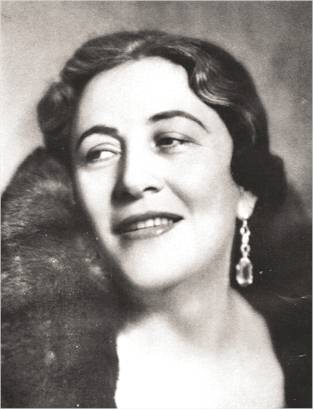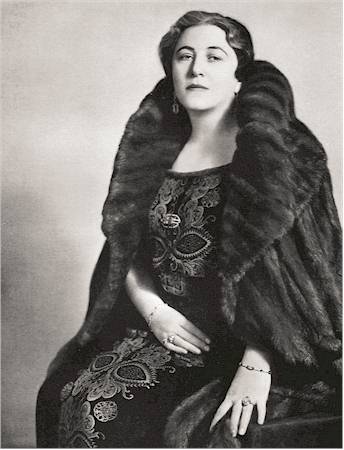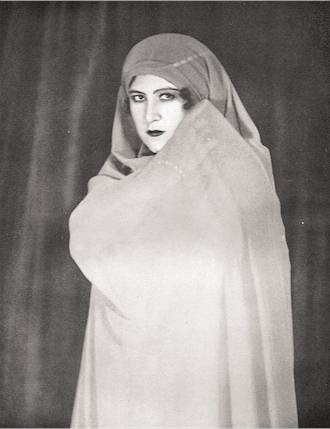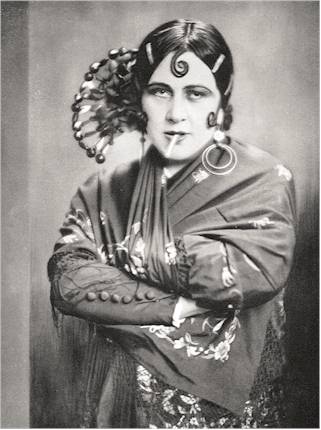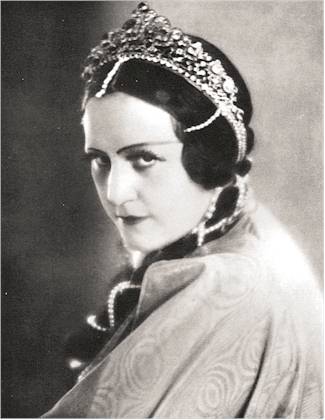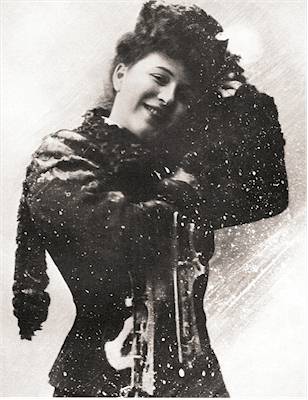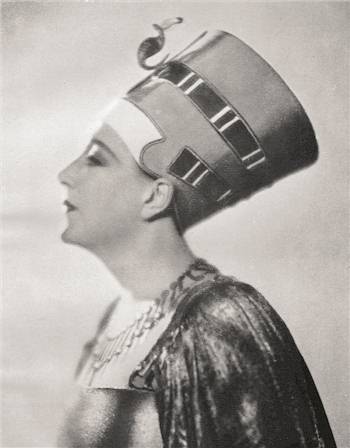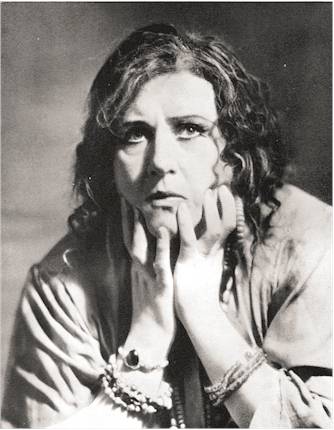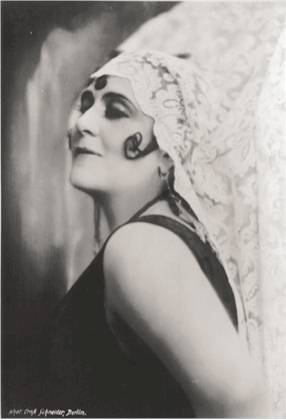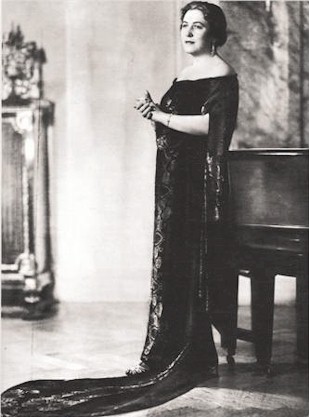Franco-German mezzo-soprano, 1889 - 1943
Biographical notes:
She was the daughter of a French father and a German mother and was born in Stockholm. Her real name was Elisabeth Hoffmann. After her parents’ divorce she and her mother moved to
Wiesbaden/Germany. Although her talent for singing was evident at an early age she had to work as a secretary to support her mother. When she heard the famous Mme Charles Cahier at the
theatre singing Carmen she decided to audition for Eugen Robert Weiss. She soon became the prize pupil at the Spangenberg Conservatory, where she met Baron Eugen Borisowitsch Lhwoff
Onégin (his mother had studied singing with García). He soon became her advisor and accompanist and eventually her first husband. Max von Schillings invited her to the Stuttgart
Hofoper where she made her début as Carmen in 1912. Only some weeks later she was the partner opposite Enrico Caruso’s Don José. He was so impressed by her that he immediately wanted to
take her to the United States! But because of the wise opposition of her husband she prevented such a venture. She continued her studies in Stuttgart with Cavaliere de Ranieri. By 1914 she was
on her way to start a world career. But at the outbreak of Worldwar I, her Russian husband had to go into hiding and she succeeded in keeping him secluded for two years. The war had also
terminated her studies with de Ranieri. She made further studies with Margarete Siems, the first Chrysothemis, Marschallin and Zerbinetta. In 1919 her husband died.
Her repertory included more than 500 songs, performing them in 13 languages...
It was in Munich where she met her second husband, the physician Dr. Fritz Pentzoldt. At this time she gave countless recitals in all German cities (apart from her operatic activities). In 1922
she left for the United States where she made her début in Carnegie Hall in a concert conducted by Leopold Stokowski. Her success was tremendous, but it was not until November 1922 she made
her first appearance at the MET as Amneris. Her partners were
Elisabeth Rethberg and Giovanni Martinelli. She also sang Brangäne and Fricka. She toured America as a recitalist and continued
to appear in USA regularly until 1938. From 1920 - 1931 she was a member of the ensemble of the Städtische Oper Berlin and from 1931 - 1935 she had also a guest contract with the
Stadttheater Zürich. She appeared in Salzburg, at the Bayreuth Festival, the Paris Opéra, the Vienna Staatsoper and at Covent Garden. After 1931 until her death she lived in Switzerland.
As Dalila
As Carmen
As Lady Macbeth
Sigrid Onégin aged 15: “I loved swimming and skating!”
As Amneris (one of her favorite roles)
As Azucena
As Carmen Comment: Sigrid Onégin had the finest and most highly trained contralto voice since Schumann-Heink. Frequently you can read that Onégin did not approach Schumann-Heink’s fire and communicative
power and commitment. I admit, listening to her the first time I had the impression of a “marmoreal” voice. But over the years I have managed to love the “true Onégin sound.”
How describing her voice? It is a sumptous voice of velvety and metallic color at the same time. There is an extraordinary flexibility which is so characteristic for her. The most famous
examples are the vocalise of Chopin’s Impromptu in A flat which was especially arranged for her. Even more thrilling is Arditi’s Leggiero invisibile. Two of her most superb recordings are
O prêtres de Baal from Meyerbeer’s Le Prophète and the Brindisi from Donizetti’s Lucrezia Borgia (cadenzas!). She could move from note to note like a
string instrument, her range was of almost three octaves (!). Her trill was a phenomen. Her Lieder recordings (1920 - 1930) are true treasures. Her version of Schubert’s Erlkönig, Du bist die Ruh’,
Freiwilliges Versinken, the Mozart songs, Mendelssohn’s Die Liebende schreibt belong to the most outstanding contralto lieder recordings.
“Ton muss Ausdruck und Ausdruck muss Ton werden.” Sigrid Onégin
All pictures are taken from her biography “Sigrid Onégin”, written by her second husband, Fritz Penzoldt, Sander Verlag Magdeburg, 1939
|
|||||||||||||||||||||||||||||
